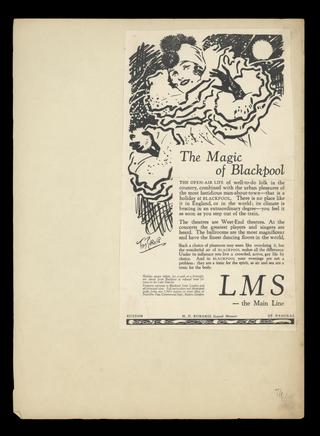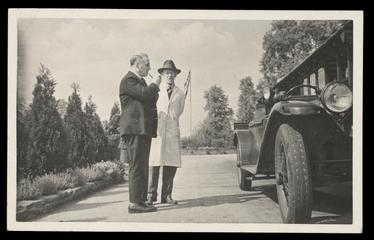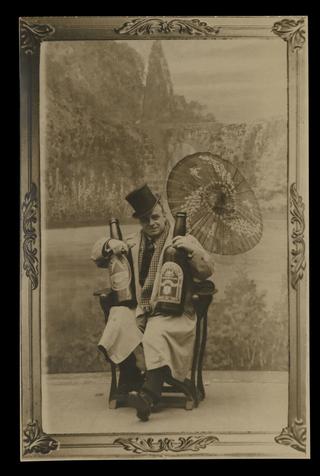
Purvis, Tom (1880-1957) 1888
Tom Purvis was born in Bristol in 1888, the son of the sailor and marine artist, T.G. Purvis (1861-1933). After leaving school he attended Camberwell College of Art in London for 3 ½ years, during this time he studied under both Sickert and Degas.
After leaving art college Purvis began working for the advertising agency Mather and Crowther however little of his work from this time has survived/has been identified. Purvis left Mather and Crowther after 6 years and began working freelance for Avenue Press, whose facilities he used in his spare time in order to master the art of lithographic printing, which defined much of his poster work.
Purvis was widely known as one of the most important English poster artists of his day, recognisable for his simplified, symbolic, two-dimensional and colourful style of printing. He is probably best known for his work with Austin Reed and the LNER, for whom he produced over 100 posters from 1923-1945. During his time collaborating with the LNER and Austin Reed Purvis created posters and magazine/newspaper advertisements for other company’s including: Aquascutum, Blackpool Pleasure Beach, Bovril, The British Industries Fair (B.I.F.), Colgate, The Daily Herald and Shell. Throughout the 1920s and 1930s he contributed to various publications through freelance work with Odhams Press, illustrating stories and front covers for titles including: 20 Story Magazine, The London Magazine, Modern Man, PAN, Passing Show Magazine, and Punch. The style Purvis employed for this work is often significantly more naturalistic than that seen in his poster work. During the Second World War Purvis was also an official poster artist for the Ministry of Supply.
During his career Purvis lobbied for the professionalisation of commercial art. He publicised his views concerning what he perceived as a lack of practical training for commercial artists through articles and lectures. In 1930 Purvis joined the Society of Industrial Artists and in 1936 he became one of the first designers to be made a Royal Designer for Industry by the Royal Society of Arts.
After the Second World War Purvis withdrew from commercial art however he continued to work with Blackpool Pleasure Beach until his death in 1959, alongside undertaking commissioned portrait work. In his later years (c.1950s) Purvis converted to Catholicism and focussed on religious paintings.
According to notes probabaly provided by Teddy Trimmer, Purvis' step-son Purvis' nickname was Brumas. It is taken from the name of the first polar bear to be born in England in 1949, which was a media sensation at the time.


